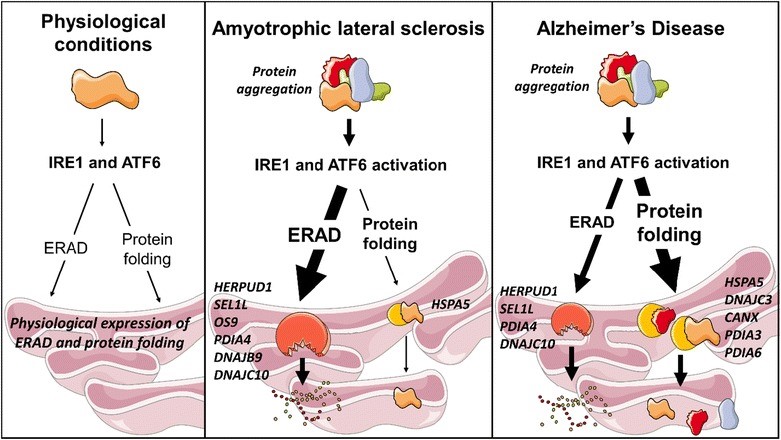Amyotrophic lateral sclerosis, or ALS, is a neurodegenerative disease that results in weakened muscles and one’s overall physical functions. It has garnered a lot of attention in the media over the last decade, along with a lot of money flowing into research on ALS. However, your average person doesn’t know much about the disease. The muscle atrophy leads a person down a devastating path, where they deteriorate physically and need much assistance with performing daily functions, such as going to the bathroom. This muscle atrophy occurs because of oxidative stress on motor neurons (motor neurons are nerve cells that send signals to our muscles). Conversely, the mental aspect of a person is not altered. The leading cause of death for those with ALS is respiratory failure.
What’s Going Wrong?
There is a response in the body that occurs to combat the oxidative stress in ALS. This response is known as the unfolded protein response, or UPR. UPR helps with protein folding in the endoplasmic reticulum and occurs when there is an accumulation of misfolded proteins in the mitochondria. UPR is important in the maintenance of the integrity of the mitochondria in the face of increased oxidative stress. In UPR, there are three signaling pathways trying to mediate this problem. There are two pathways involved in a process known as ERAD (ER-associated degradation). These pathways are known as ATF6 and IRE1α. They lead to increased levels of ER chaperons, to fix this unfolded protein issue. ERAD is responsible for giving the correct folding of proteins, but if these pathways have too much protein folding demand, the ER can be put under stress (oxidative stress). With overactive ERAD, there is an abundance of unfolded proteins, leading to activation of UPR. In ALS, a common mutation is SOD1, and this gene interacts with components of ERAD, triggering apoptosis in motor neurons (progresses disease).

Treatments
Sadly, there is no option to reverse the muscles damage of ALS once it has occurred; the only thing treatments can do at this point is slow the progression of the disease. Some available drugs include Riluzole (slows down disease by lowering NT glutamate levels), Edaravone (shown to reduce decline in physical function), Baclofen (helps spasticity), or Gabapentin (controls pain). Furthermore, therapies are another method for treatment. Some available therapies include speech therapy, occupational therapy, physical therapy, and breathing care. Physical therapy helps with the pain and with physical functions like walking and overall mobility. Breathing care can supply patients with equipment that can assist them in breathing as it becomes more and more difficult.
Sources:
https://www.ncbi.nlm.nih.gov/pmc/articles/PMC6111088/
